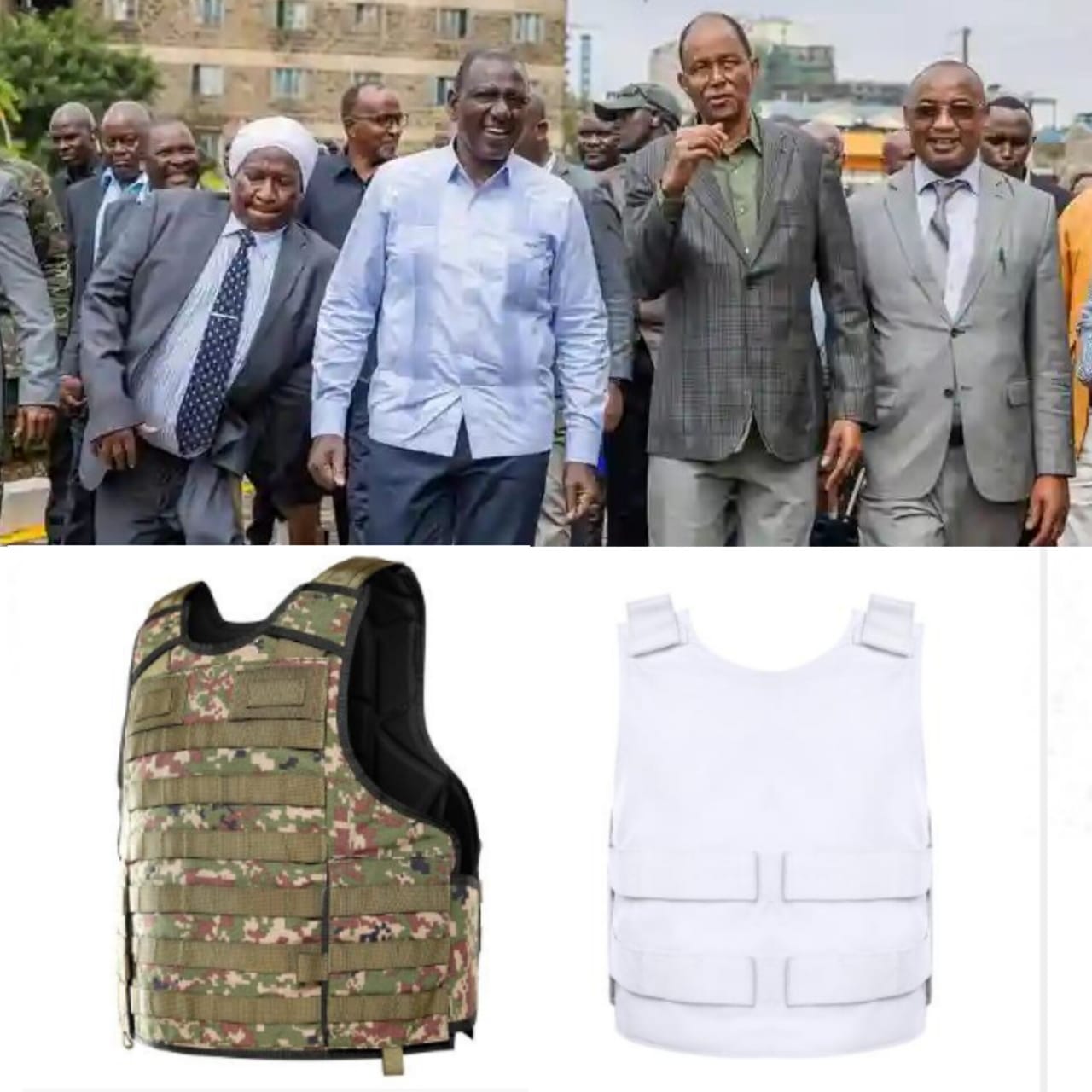
WILLIAM RUTO’S BULLETPROOF VEST SPOTTED IN NAIROBI: A SYMBOL OF SECURITY IN TROUBLING TIMES
By Daniel Kioko
President William Ruto recently embarked on a tour of Nairobi, where he launched several projects while making various promises.
Recently, he visited Eastleigh, Nairobi, where he addressed a large crowd of residents and traders.
A video of Ruto speaking emerged online, and social media users speculated that he was wearing a ballistic vest.
The president’s tour of the city came after his “handshake” with Raila Odinga at the Kenyatta International Convention Center (KICC) on Friday, March 7.
Ruto’s ruling United Democratic Alliance (UDA) and the opposition Orange Democratic Movement (ODM) signed a memorandum of agreement to work together.
Both parties insisted that the agreement aimed to address national challenges. They pledged to tackle youth unemployment, audit public debt, increase revenue allocation to the 47 counties under devolution, and ensure that citizens’ rights— including the right to peaceful demonstration— are respected by the police.
Even so, Raila, the ODM leader, clarified that the agreement did not signify the formation of a coalition with UDA.
DID WILLIAM RUTO WEAR A BULLETPROOF VEST?
On Monday, March 10, Ruto visited Eastleigh, often referred to as “Little Mogadishu” due to its large Somali population and its status as a commercial hub within Nairobi.
Additionally, Eastleigh has faced security challenges in the past, including gang violence and terrorist attacks.
Earlier that morning, the president had launched projects in Kamukunji, where he addressed Kenyans and made various development promises.
Security was tight, with several members of the General Service Unit (GSU) and plainclothes officers surrounding Ruto’s vehicle. The police kept the shouting crowd at bay while scanning for potential threats.
Ruto then emerged from the sunroof of his vehicle to address the crowd.
“Police officers, allow the people to move closer to me. Why are you holding them back?” the president ordered.
Ruto wore a sky-blue shirt and dark trousers, but Kenyans noticed something unusual.
PURPOSE OF A BULLETPROOF VEST
According to Premier Body Armour, a bulletproof vest, also known as a tactical vest or ballistic vest, protects wearers from projectiles, including bullets.
These vests are made of materials designed to absorb and distribute the impact of bullets, protecting the wearer.
Kevlar, a strong, lightweight, and heat-resistant synthetic fiber developed by Stephanie Kwolek at DuPont, is known for its high tensile strength-to-weight ratio. It is widely used in bulletproof vests and tires.
The vest is highly adjustable, allowing for a tighter fit and better overlap on the sides.
PUBLIC REACTIONS
Ruto’s decision to wear a bulletproof vest was seen by some as a bold and necessary precaution, signaling his commitment to standing firm in the face of political opposition and threats— particularly from Gen Z protesters who recently attempted to storm State House but were overpowered by security officers.
His critics, however, argued that it reflected the government’s failure to guarantee security for its leaders against political violence.
The image of President William Ruto in Eastleigh wearing a bulletproof vest speaks volumes about Kenya’s current political and security climate. It highlights the challenges facing the president and his government— both from within and outside the political arena. Kenya’s political environment remains as unpredictable as ever.


